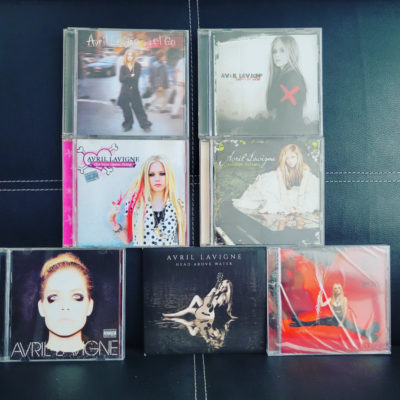The music is evolving and is adapting through the different cultural contexts where it develops and due that, new genres are emerging from the tradition and from the encounter that traditional music and new commercial sounds are having. These people that start to become in the “new workforce” (the young people should face sooner or later the immersion in adult life) has this need to find a sound that identified them and this need is catalyst for the creation of new genres in music, it helps to do that.
The Colombian musical culture always is synonym of cheerful music because is the meeting point for a diversity of cultures, Indigene, Spanish and African and the mix of those roots through centuries create sounds full of life and joy that promotes smiles and dances. Could be through percussion, strings or wind instruments the Colombian music refers to the celebration of life or death but in a festive way. As an example you can hear Cumbia, Vallenato, Bambuco, Joropo and even Popular music or Guasca.

Figure 1: Colombian Cumbia show that evidence the diversity of ethnicities in the country.
Tropipop refers to the mix between Colombian tropical music and Pop music, this new sound was shaped during the late 90’s and early 00’s when the foreign sound it was growing in popularity in the country. The Tropipop term was devised in an informal way when a Colombian journalist, Antonio Casale, was interviewing the lead vocalist from Mauricio & Palo de Agua, a band whose sound belongs to the genre, due their nomination to the Latin Grammys in 2004 and about the sound of the band and his answer was that is a mix between tropical music and pop, Tropipop, and that’s how the genre’s name borned.
This term create disagreements in the local music community because Tropipop is mostly a mix of Caribbean sounds like Vallenato or Cumbia and Pop but the spectrum of sounds in Colombian tropical music is broader and that’s why the controversy exists because doesn’t include all the tropical sounds in the country. In fact, the experts always mention a Colombian rock band call Genesis as the pioneer in the mix of folklore and rock, all kind all tropical sounds.

The origin of this sound can be track in the late 90’s when a Colombian artist focused on tropical music release an album that mix traditional sounds and musical arrangements that include electric guitars, Carlos Vives and his album Clásicos de la Provincia in 1993, that fusion of sounds was the beginning to explore make music in that way, find the contact point between the tradition and the commercial world in order to get a higher audience in the new generations and
the result was the creation of a new genre (he didn´t know in that moment). Carlos Vives kept the experiments with these sounds and for one of his albums, El Amor de Mi Tierra in 1999, he worked with Emilio Stefan that put his style, an international sound but keeping the tropical roots that Vives wants; here you can see how the influence of each sounds change the other and through the years the building and consolidation of Tropipop.
Tropipop has a lot of representatives artists like Carlos Vives, Fonseca Fanny Lu, Gusi y Lucas Arnau that still doing music in the industry and they’re include new sounds in their music but keeping the tropical vibe; Pasabordo, Wamba, Bacilos, Sanalejo y Mauricio & Palo de Agua that a couple of years ago start to reactivate their careers and make a second chance to the genre and others big artists that aren’t active today like Bonka, Jerau, Tinto, Sin ánimo de lucro, Maia y Majua. But with any doubt those responsible to made the genre successful at that moment were the bands that emerge in schools and wanted to show to the country their point of view in music.
Bands like Bonka, Wamba, Sin Ánimo de Lucro y Majua became in the main big stars in the genre and all of them had some points in common; school friends meeting to make music, they wrote songs about their feelings at that moment (teens) like the prettiest girl in the school, party all night or simply hang out with their friends and this guys were empirical musicians because none of them has formal musical education; this final point received a lot of critics from the music industry and experts that believes that a genre can’t emerge from people without musical education.

However, putting aside the critics perhaps that was the success formula at that moment because all the young people in school or university can feel identified with every song and band and off course they could imagine to be the next famous band because they also had the requirements, friendship, young and without musical education.
The genre received the help of the radio stations to be successful, was the platform that led them to each school in the capital city, Bogotá, and in the majority of the schools from other main cities through special events called “Giras de Colegios” (Schools Tours); the y played their songs and automatically increase their number of fans in each visit to the schools and after that the new fans ask every minute for their songs in the radio station without a break. It’s a fact that the teens made famous the genre; in fact, everyone (I include myself) made a lot of activities in order to get that the radio stations chose our schools as the next stop of the tour.
Another success platform was at that moment (2006 – 2010) the radio stations made musical festivals where the top artists in the industry played in big stages for more than 60.000 people and these Tropipop bands were the ones to open the festival; so again they charm more people with their music and their lyrics very reliable to everyone. They were the youth voice and that´s why their songs rise quickly on musical charts and be on top for several weeks.
Another big support was the record company SCP, a local and alternative discographic that had in their label a los of artist that born in Tropipop and it helped them to impulse their careers in the local market in order to sell the right for other markets to the big companies.

Figure 4: Evento 40 III on april 14th of 2007.Simon Bolivar park in Bogotá with an audience of more than 60.000 people.
One of the moments that put Tropipop on the world stage and give them the importance in the local market was the Latin Grammy nomination in 2004 to Mauricio & Palo de Agua as Best New Artist and besides they didn’t win the recognition to the new genre that was emerging was the most important that night and validating the effort that these bands were making. In 2007 in the new ceremony Fonseca was nominated a Record of the Year and won Best Tropical Song and in 2009 Sin Ánimo de Lucro received a nomination as Best Contemporary Tropical Album. These nominations allow the genre to travel to other countries like Ecuador, Perú y Venezuela where the success was excellent, not at the same level in Colombia but is a win battle.
Inside in a social analysis is important too understand who are the people that create Tropipop y conquer the country. The first point is the band that made the genre famous were from Bogota, capital city in the middle of the country, surrounded by mountains and located at 2.600 m.a.s.l. that makes the city a cold place, particular point because due to that is not common with these geographic features tropical sounds were popular and less probable that a tropical genre could emerge; the explanation for this need a formal study with a real sociological analysis and lead by experts both social and music however I’ll explain a couple of points that can help to understand this situation.
One, the Bogotano or “Rolo” the common demonym always have been rebel and pioneer to demand changes in a social or political environment; being rebel like that the Bogotano always want to break standars in every ambit in this specific case, musical; two, Bogotá is the city of everyone and the migration of people from the coast of the country is a constant phenomenon so is common see families from every corner of the country living in Bogotá, have kids and raise them next to the “rolo” kids and this amalgam of cultures ease not only the musical fusion but also gastronomy, culture, sports, etc. Therefore, the mix of sounds from all over the country is a situation that doesn’t have any problem and it adapts to the capital lifestyle. Third, the young didn’t find music to identify with, there were always rock fans, the English music was increasing and the parents music is something that the youth want to avoid in order to be cool so what was the music for the people that didn’t feel music as own and wanted to c hill out; the tropical music is always happy and mix this sound with something modern allow the young people to explore new ways to express themselves through music.
Another point for the social analysis is that the bands were from upper class schools and with that it appears a stereotype in the profile of this people, they were “rolos” and they have a particular way to talk that in common language is “gomelo”; they dresses almost equal, jeans, long sleeve shirt, tennis and they start to use the “sombrero vueltiao” (a typical hat form the Atlantic coast of the country) and this is the outfit that these bands always use, the fans start to copy that and in the parties were more than mandatory, even today during the parties need is usual to see it.

Figure 5: Building where Caracol Radio is located and the radio station “Los 40 Principales” one of the main promoters of the genre.
The genre doesn’t survive to the next decade (2010-2020) and there are two big explanations, the first one that the artists didn’t know how to adapt to the musical change that Colombian industry suffered and being young bands formed with young people the splits were faster than the change of mindset that they needed it and the lack of experience in an difficult industry and the challenges that any industry demand and the second one and in my opinion the most harmful was a discredit campaign that a well-known journalist made, Julio Sanchez Cristo, known as “No Más Tropipop” (No More Tropipop), and he is a respectful journalist in the industry so the consequences were huge and the genre start to disappear from the content grills in the radio station and with that that the artists until the audience never heard of them.
Tropipop was a main piece in the building of the musical culture in the country, specially in the process to include young people and keep our traditional sounds alive through the genre, all the sounds know every corner of the country and it helped the new tropical sounds get inside in the market, like reggaeton that conquer the industry in the country
Today the artists start to make campaigns to revive the genre through the nostalgia and the feeling than can produce in people; with the help of Carlos Vives, the artist that helps to shape the genre and with all the top artists from that Tropipop golden age, in 2018 start “Tropipop is Back” that brings back again the sound and various events in order to enter to the musical market. The 2020 let the efforts in pause all the process due the pandemic but they already here and only the time and the audience will say if they will resurface and will have another chance or if they still live in our memories and adding the soundtrack of our youth ages.

Figure 6: Promotional image for the campaign “Tropipop is Back”.
Listen to the playlist here:


